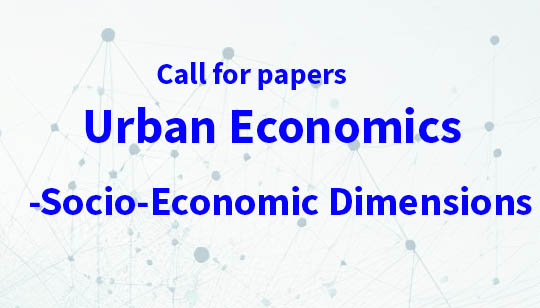Model Cities for Resilience: Climate-led Initiatives
DOI:
https://doi.org/10.25034/ijcua.2021.v5n1-4Keywords:
Climate Change, Sustainable Cities, Sponge Cities, Cities and Natural Disasters, Cities and Climate ActionsAbstract
Paris Agreement of December 2015 was the last official initiative led by the United Nations (UN) as the driver of climate change mitigation. Climate change was hence linked with an increase in the occurrence of natural hazards. A variety of initiatives were consequently adopted under different themes such as sustainable cities, climate-friendly development, and low-carbon cities. However, most of the initiatives targeted by global cities with urban areas being the focus in terms of taking action against global warming issues. This is due to the structural and environmental features of cities characterized by being populated, as such, they not only generate a large number of carbon emissions but also happens to be the biggest consumer of natural resources. In turn, they create a microclimate, which contributes to climate change. Masdar City, for example, was designed as the first fully sustainable urban area, which replaced fuel-based energy with electric-based energy. China, as another example, introduced the Sponge Cities action, a method of urban water management to mitigate against flooding. Consequently, architects and urban planners are urged to conform to the proposals that would mitigate global warming. This paper, as a result, examines some of the models that have been internationally adopted and thereafter provide recommendations that can be implemented in large urban areas in Turkey, primarily in Istanbul.
Downloads
References
Adamo, S. B. (2011). Slow-onset hazards and population displacement in the context of climate change. Center for International Human Rights, John Jay College of Criminal Justice, CUNY, New York Liaison Office, UNHCR April, 27, 2011. Retrieved from http://www.ciesin.org/documents/Adamo_CCMig_cuny_april2011.pdf
Akagi, J. (2018). Low Carbon City Profile: Climate Change Actions by Asian Cities in the City-to-City Collaboration Programme. https://www.iges.or.jp/en/publication_documents/pub/books/en/6495/Low-carbon_City_Profile_e_180313.pdf
C40 Cities. (2014). Yokohama: Yokohama Smart City Project. from https://www.c40.org/profiles/2014-yokohama
Caprotti, F., Springer, C., & Harmer, N. (2015). ‘Eco’ For Whom? Envisioning Eco-urbanism in the Sino-Singapore Tianjin Eco-city, China. International Journal of Urban and Regional Research, 39(3), 495-517. https://doi.org/10.1111/1468-2427.12233
Chang, I. C. C. (2017). Failure matters: Reassembling eco-urbanism in a globalizing China. Environment and Planning A: Economy and Space, 49(8), 1719-1742. https://doi.org/10.1177/0308518X16685092
Climate Central. (2019) Pouring It On: How Climate Change Intensifies Heavy Rain Events Retrieved from https://assets.climatecentral.org/pdfs/May2019_Report_PouringItOn.pdf?pdf=PouringItOn-Report
Cugurullo, F. (2013). How to Build a Sandcastle: An Analysis of the Genesis and Development of Masdar City. Journal of Urban Technology, 20(1), 23-37. https://doi.org/10.1080/10630732.2012.735105
Grey, F. A. (2018). Masdar City as a Prototype for Eco-Cities. Digest of Middle East Studies, 27(2), 261-277. https://doi.org/10.1111/dome.12138
Günel, G. (2019). Spaceship in the Desert: Energy, climate change, and urban design in Abu Dhabi: Duke University Press. https://doi.org/10.1215/9781478002406.
Huang, G., Shen, Z., & Mardin, R. (2019). Overview of Urban Planning and Water-Related Disaster Management. In G. Huang & Z. Shen (Eds.), Urban Planning and Water-related Disaster Management (pp. 1-10). Cham: Springer International Publishing. https://doi.org/10.1007/978-3-319-90173-2_1
Hulme, M. (2009). On the origin of ‘the greenhouse effect’: John Tyndall's 1859 interrogation of nature. Weather, 64(5), 121-123. https://doi.org/10.1002/wea.386
ISOCARP. (2018). Climate Change Planning. Paper presented at the 54th ISOCARP International Congress, Bodø, Norway.
Kherdeen, R. M. (2016). Masdar City: Oriental City of the Twenty-First Century. Master's degree thesis, director: Jean-Louis Cohen, Institute of Fine Arts New York University. Retrieved from https://www.academia.edu/25117909/Masdar_City_Oriental_City_of_the_Twenty-First_Century
Kiliç, A. M. (2006). Turkey's Main Energy Sources and Importance of Usage in Energy Sector. Energy Exploration & Exploitation, 24(1-2), 1-17. https://doi.org/10.1260/014459806779388001
Lau, A. (2012). Masdar City: A model of urban environmental sustainability. Hentet, 8(1), 77-82.
Lee, S. E., Braithwaite, P., Leach, J. M., & Rogers, C. D. F. (2016). A comparison of energy systems in Birmingham, UK, with Masdar City, an embryonic city in Abu Dhabi Emirate. Renewable and Sustainable Energy Reviews, 65, 1299-1309. https://doi.org/10.1016/j.rser.2016.07.019
Li, Y., Bonhomme, C., & Deroubaix, J.-F. (2018). Can a Sustainable Urban Development Model be Exported? Construction of the “Exemplary” Tianjin Eco-city. China Perspectives, 2018(2018/1-2), 87-97. https://doi.org/10.4000/chinaperspectives.7821
Lucon, O., Urge-Vorsatz, D., Zain Ahmed, A., Akbari, H., Bertoldi, P., Cabeza, L. F., & Krey, V. (2015). Buildings. In Climate Change 2014: Mitigation of Climate Change: Cambridge University Press.
Manghnani, N., & Bajaj, K. (2014). Masdar City: A Model of Urban Environmental Sustainability. Journal of Engineering Research and Applications, 4(10), 38-42. Retrieved from https://core.ac.uk/download/pdf/25523393.pdf
Mezher, T., Dawelbait, G., & Tsai, I. (2016). Building Eco-Cities of the Future: The Example of Masdar City. Int. J. of Thermal & Environmental Engineering, 12(1), 1-8. https://doi.org/10.5383/ijtee.12.01.001
Patel, P., & Griffiths, S. (2013). Masdar City showcases sustainability. MRS Bulletin, 38(6), 450-451. https://doi.org/10.1557/mrs.2013.140
Reyes-Acevedo, M. A., Flacke, J., & Brussel, M. J. G. (2011, 2011). Urban flash flood vulnerability. Paper presented at the IGS - SENSE Conference 2011.
Seto, K. C., Dhakal, S., Bigio, A., Blanco, H., Delgado, G. C., Dewar, D., & Lwasa, S. (2014). Human settlements, infrastructure and spatial planning. Climate change 2014: Mitigation of climate change. In Contribution of Working Group III to the Fifth Assessment Report of the Intergovernmental Panel on Climate Change. Cambridge, United Kingdom and New York, NY, USA.
Timperley, J. (2018). The Carbon Brief Profile. Carbon Brief Ltd.
Toh, F. (2018). Turenscape: Creating Sponge Cities. from https://www.indesignlive.sg/people/turenscape-creating-sponge-cities
Turoğlu, H. (2011). Flashfloods and floods in Istanbul. Ankara Üniversitesi Çevrebilimleri Dergisi, 3(1), 39-46. https://doi.org/10.1501/csaum_0000000043
World Bank. (2009). Sino-Singapore Tianjin Eco-City : A Case Study of an Emerging Eco-City in China W. Bank. Washington, DC. Retrieved from https://openknowledge.worldbank.org/handle/10986/28143
Yao, P. C., & Chong, L. C. (2010). Planning Strategies for Leading Energy Efficient and Sustainable City Development, The Second China Energy Scientist Forum.
Zevenbergen, C., Fu, D., & Pathirana, A. (2018). Transitioning to sponge cities: challenges and opportunities to address urban water problems in China. Wate, 10(9), 1230. https://doi.org/10.3390/w10091230
Zhan, C., De Jong, M., & De Bruijn, H. (2018). Funding sustainable cities: A comparative study of sino-singapore tianjin eco-city and shenzhen international low-carbon city. Sustainability, 10(11), 4256. https://doi.org/10.3390/su10114256
Published
Issue
Section
License
Copyright (c) 2020 Didem Gunes Yilmaz

This work is licensed under a Creative Commons Attribution 4.0 International License.






















